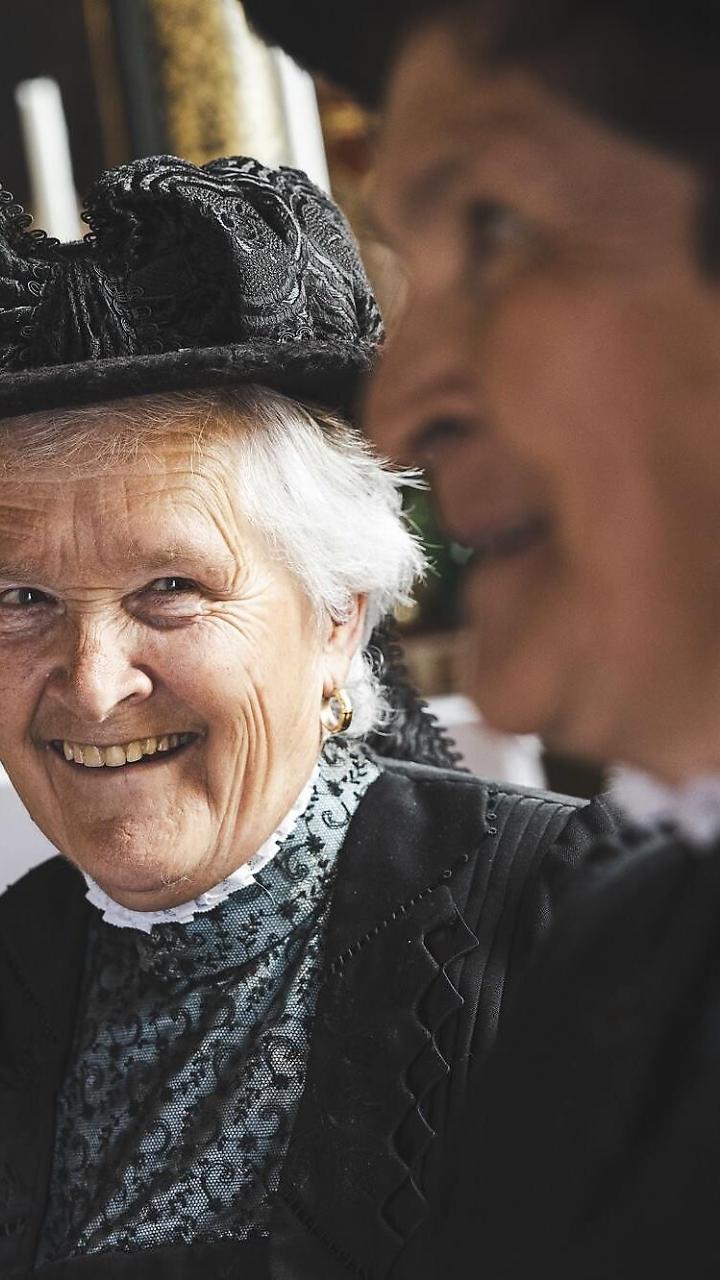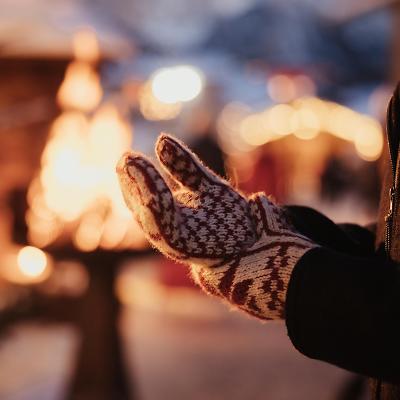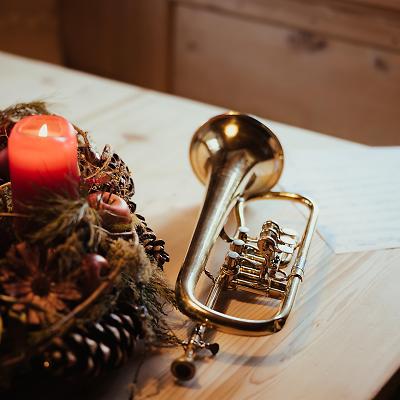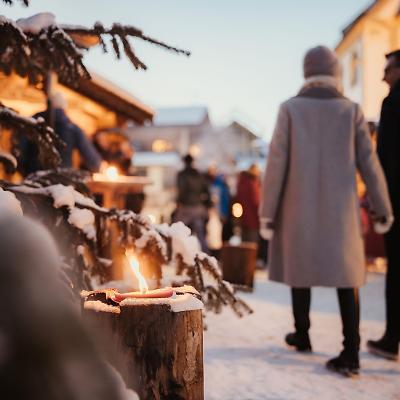
Noza da paur, Ladin and rural weddings once used to be celebrated in winter. There was far too much work to be carried out in the fields, woods and houses in spring and summer. Hence the Noza da paur, Val Badia’s Ladin wedding, was celebrated in winter with traditional clothes, rituals, dances, games and parades.
Why did people once get married in winter?
Who are the sonsí and les sonseles?
very two years, in the heart of Badia, a unique event takes place that takes you back in time and lets you discover the many traditions surrounding the traditional farmers’ wedding.
Immerse yourself in the Ladin tradition with a wedding procession among old sleighs and ancient costumes and a banquet with typical dishes.
A special event that celebrates the authenticity and charm of the country wedding of the past.
During the event photos or video footage may be taken for the purpose of documentation and promotion of the event and the region. The footage may be used and published on websites, on social networks and on media in compliance with the data protection regulations.
Follow the SS244 Val Badia road towards Badia, continue on the San Linert street until you reach the centre of the village.
Why is it important to be aware of Ladin customs over and above folkloristic aspects?
For holding on to a population’s customs and traditions allows us to venture into the future with sound awareness. Without its roots, any soil is friable, unstable, fragile and lacking in identity.
Why and to whom was and still is a hornless goat given as a gift in occasion of the “noza da paur”, the Ladin weddings?
Our ancestors knew how to have a good time and the “cioura müla”, the hornless goat, provides a perfect example. The hornless goat was and still is prank-sold to the newlywed’s older siblings, who were still single or unmarried.
What made “furtaies”, a spiral-shaped fried dessert, so important prior to Ladin weddings?
The “furtaies” were being prepared when the groom visited the bride's house to get her father's approval and set the date for the “noza da paur”. The snail-shaped furtaies are served with fruit in syrup, applesauce or cranberry jam.
What makes the “noza da paur”, the Ladin wedding, so wonderful?
For the women wore the “guant da paur”, a dress with a white silk apron and a lily of the valley wreath while the groom wore a wreath on his arm and a hat. Ci bel!
Why were the unmarried brothers of the spouses, the “sonsí”, of importance?
The “sonsí”, who wore hats decorated with distinctive feathers and flowers crafted from paper and aluminium foil, were in charge of bringing the party to life with music and dance, from morning until late into the night.
Why was and still is the bride “stolen” during the meal of the “noza da paur”?
Well, the Ladins have always been great pranksters. Thus, during the wedding banquet it was and still is customary to “tó la novicia”, to steal the bride. Some friends of the spouses take the bride and it is then the best man's duty to return her “safe and sound” to the groom.


Str. Col Alt 36, Corvara














































